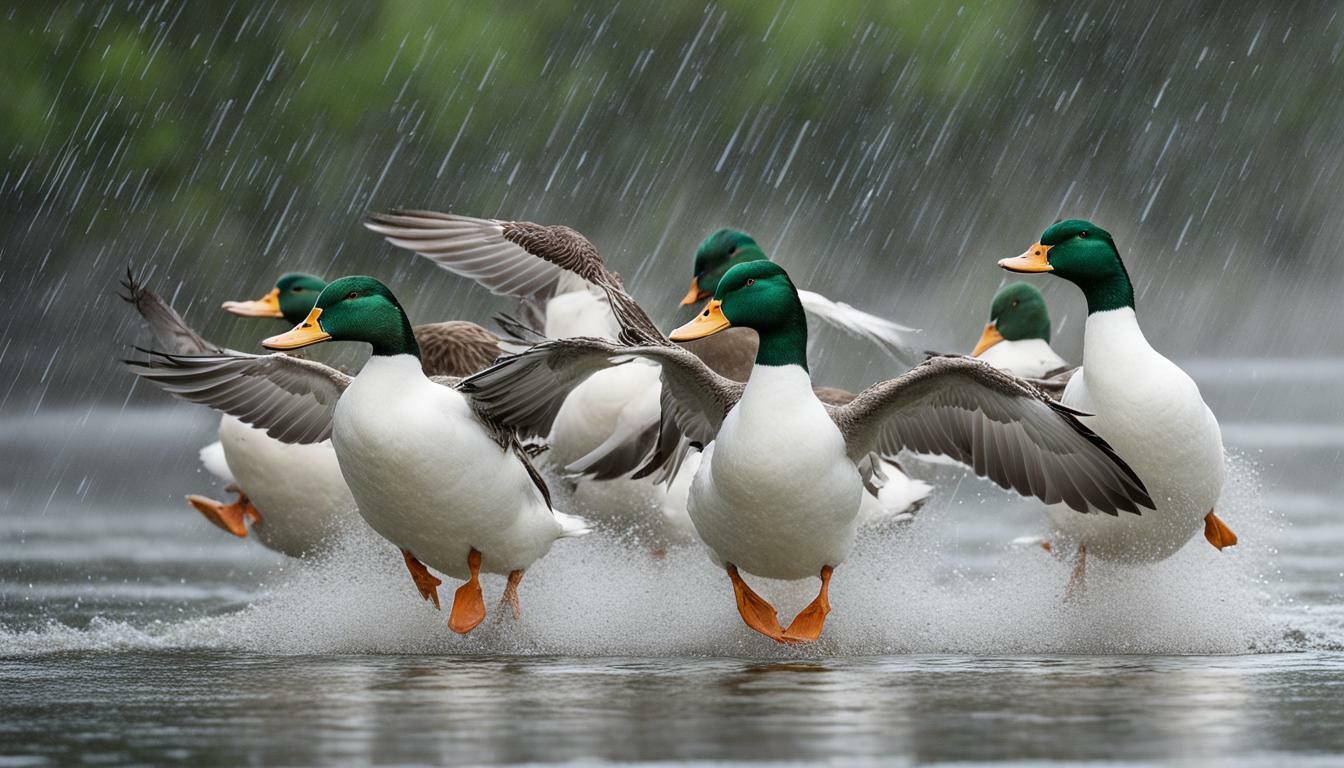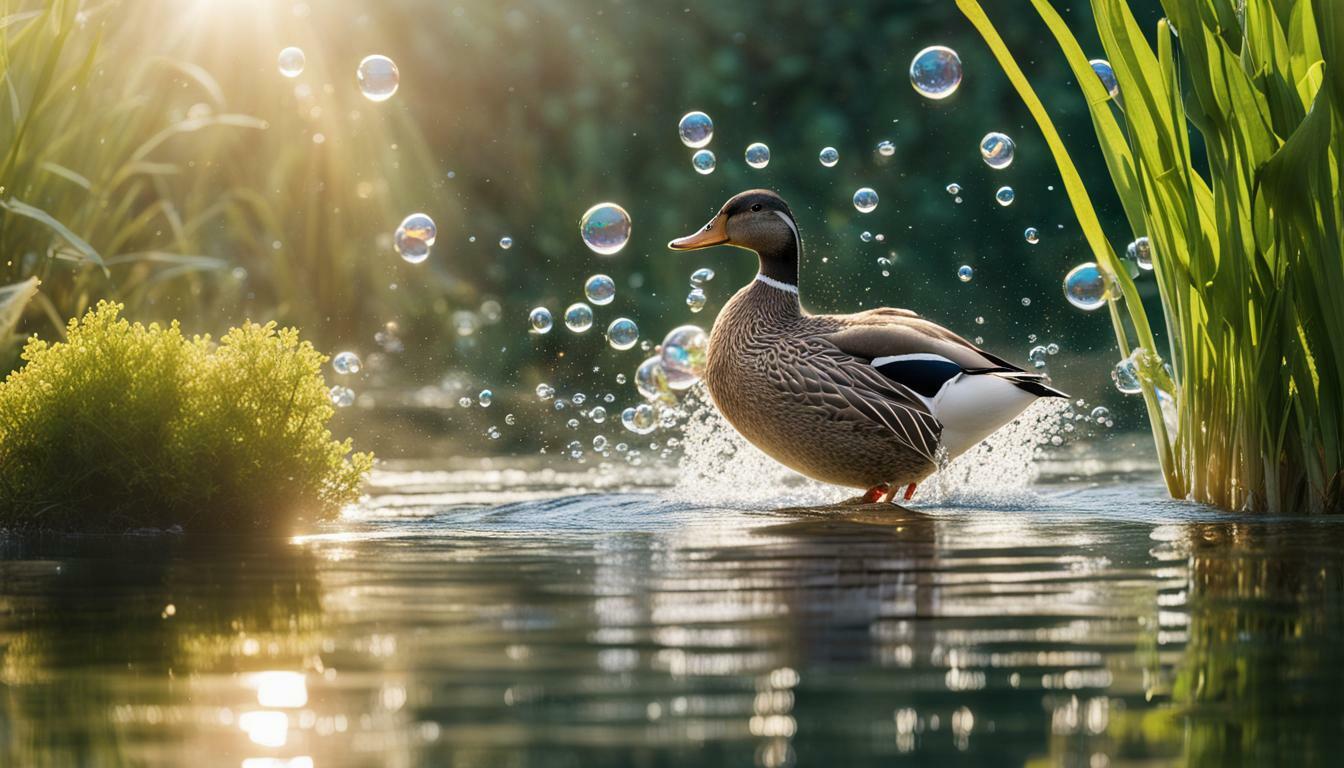Do Ducks Have Legs? Unraveling the Mystery

Table of content:
Ducks are a common sight in parks, ponds, and rivers. Their familiar quack and waddle makes them a beloved bird. But have you ever looked closely at a duck’s legs and feet? Their anatomy is uniquely adapted for an aquatic lifestyle. In this article, we’ll take a deep dive into duck legs and feet.
Do Ducks Have Knees?
Many people assume ducks, like all birds, have backward facing knees. However, this is not accurate. Ducks do not have any knees! Their legs are composed of three main parts:
- Thigh
- Shank
- Foot/toes
The joint that appears to be a backwards knee is actually the ankle joint. This allows ducks to fold their legs underneath them when swimming or resting. Their joint operates the same as a human knee, allowing the foot to bend up towards the body.
Ducks are missing the middle part of the leg that in humans contains the knee and calf muscle. So while it appears ducks have backward knees, they simply have ankles that bend in a similar fashion.
How Many Legs Do Ducks Have?
All ducks have two legs. Their legs are positioned far back on their bodies, closer to the tail than head and wings. Having two legs located towards the rear helps ducks walk and swim.
Duck legs are short but very strong and sturdy. Longer legs would make swimming and diving more difficult. Short, strong legs allow ducks to paddle effectively through water.
Being bipedal also enables ducks to walk on land when necessary. Having just two legs is more energy efficient for swimming versus extra appendages.
Why Do Duck Legs Bend Backwards?
As mentioned above, duck legs do not actually bend backwards. Their ankle joint simply operates the same way as a knee joint in humans and other mammals.
This allows ducks to tuck their feet up against their bodies while swimming. Streamlining their legs and feet reduces drag and makes them more hydrodynamic in the water.
Being able to fold their feet also helps ducks when resting. Tucking their feet underneath them allows ducks to perch on branches or the ground. Their tucked legs keep their bodies centered over their feet.
So while it appears unnatural to humans, backward bending legs and feet are perfectly adapted for a duck’s lifestyle.
Do Duck Feet Have Webbing?
All ducks have webbed feet, which again helps propel them efficiently through water. Webbed feet essentially create paddles that enable ducks to push themselves along as they swim.
A duck’s webbed foot is made up of three main parts:
- Toes – Ducks have four toes on each foot. Three point forward and one points back.
- Webbing – The extra skin stretching between each toe is the webbing. Webbing can also connect a duck’s feet to partway up their legs for even more swim power.
- Nails – The tips of their toes have nails for grip, similar to human fingernails. However, duck nails tend to be flatter for walking on muddy ground.
The webs between their widespread toes provide more surface area for pushing against the water as ducks swim. Many ducks also have fringes of webbing along the edges of their feet and up their legs to propel them even farther.
All this webbing helps turn duck feet into effective paddles. Their webbed feet play an integral role in letting ducks thrive in aquatic environments.
Duck Leg and Foot Anatomy
Now that we’ve covered some duck leg basics, let’s take a closer look at the anatomy:
Thigh
- Made of muscle, fat, and thick skin
- Attaches the shank to the duck’s body
- Provides propulsion through water when swimming
Shank
- Equivalent to a human calf and foot
- Contains no knee joint
- Made of thin skin covering bone
- Joint at the end operates as the ankle
Foot
- Made of bones, webbing, toes, and nails
- Toes articulate to grip branches, ground
- Webbing provides propulsion in water
- Nails provide grip on land
How Ducks Walk and Swim
Their specialized legs and feet allow ducks to walk and swim in their aquatic environments. Here’s how their anatomy powers both locomotion methods:
Walking
A duck’s thigh muscles propel its short, sturdy legs forward with each step. Their lower leg and foot essentially operate as one unit.
With each step, their ankle joint flexes as their weight shifts to that foot. Their nails help them grip the ground for leverage.
Ducks walk in a waddling motion from side to side. Their feet flap in toward the body’s center line with each step. Waddling allows ducks to maintain balance and stability on land.
Swimming
In the water, ducks propel themselves by paddle power. They use their webbed feet in a front-to-back paddling motion.
As their feet push back through the water, the webbing provides lots of surface area for propulsion. Their short but muscular legs provide the power needed for swimming.
Simultaneously, their wings flap to provide lift and help drive them forward through the water. Ducks alternate paddling each webbed foot in sync with the wing flaps.
Ducks are agile and speedy swimmers. Their strong legs, webbed feet, and wings moving in unison make them adept at moving through water to find food, escape predators, or migrate long distances.
Final Thoughts
Ducks have a remarkable anatomy that suits their aquatic lifestyle. Their short, strong legs with special ankle joints allow them to walk and fold their feet tight to their bodies. Webbed toes create paddle-like feet that provide propulsion through water. Together, these special leg and foot adaptations enable ducks to thrive on land and in water. The next time you see a duck, take a moment to admire its perfectly designed legs and feet!
Welcome. I’m Adreena Shanum, the proud owner of this website, and I am incredibly passionate about animals, especially poultry. I founded adreenapets.com as a labor of love, stemming from my desire to share my knowledge and experiences with poultry enthusiasts worldwide.




